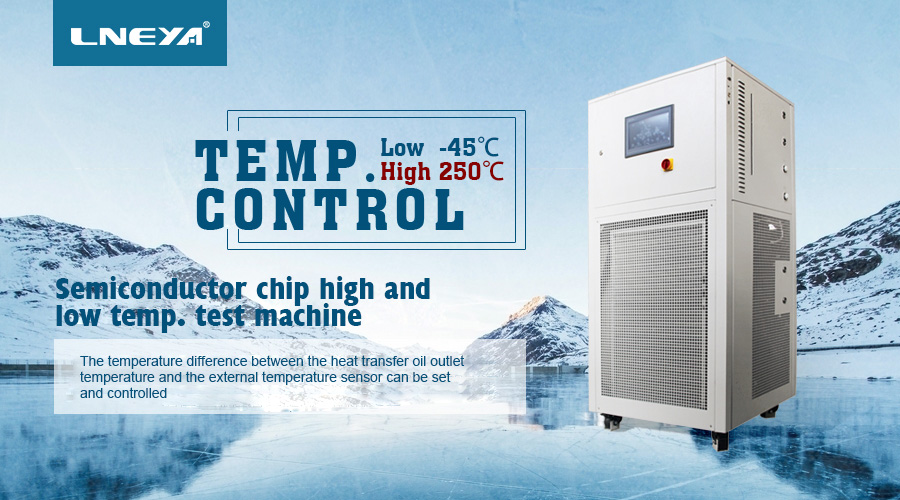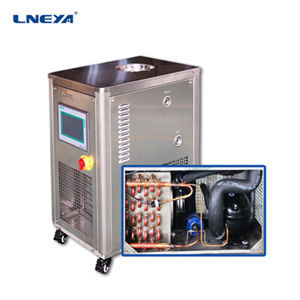How to solve the shortage of cooling in the semiconductor cooling cycle system
Il semiconductor cooling cycle system is a device for cooling the semiconductor heat-generating part in the refrigeration equipment. If the cooling capacity of the LNEYA semiconductor cooling circulation system is insufficient during operation, it is necessary to check in time to see what has gone wrong.
Quando la capacità di raffreddamento del sistema del ciclo di raffreddamento dei semiconduttori è insufficiente, si determina innanzitutto se il filtro è bloccato. L'ostruzione del filtro comprende: ostruzione del filtro di aspirazione e ostruzione del filtro a secco. A questo punto, è sufficiente pulirlo e pulirlo.
By observing to determine whether it is too small or too large for the expansion valve to open, by adjusting the amount of water. The problem of leakage of the filling agent in the temperature sensor of the expansion valve can be solved by opening the cooling tower. A dirty or blocked ice valve can be solved by cleaning. If the bearing of the compressor is worn out, the clearance is too large, and the problem of insufficient cooling capacity can be solved by inspection and replacement. Use components with precise structure, high reliability and long life. To ensure the stable operation of the unit.
The condenser of the semiconductor cooling cycle system selects the shell-and-tube condenser, which can optimize the temperature field distribution and the flow field distribution of the refrigerant, and the heat exchange efficiency is high. The outer fin design of the heat exchange tube enhances the heat exchange condensation and improves the heat exchange efficiency outside the tube. Insufficient refrigerant charge and excessive refrigerant leakage may also cause insufficient cooling capacity in the semiconductor cooling cycle system. These problems can be solved by adding or subtracting the refrigerant charge, leaking, and adding refrigerant after maintenance.
Semiconductor cooling cycle system evaporator with too small evaporator frosting too thick> There are a large number of lubricants in the evaporator or the liquid storage valve of the liquid storage valve is too small, the cooling water is insufficient or the water temperature is too high, etc. The cooling cycle system has insufficient cooling capacity. If the evaporator is too small, it can reduce the heat load or replace the evaporator. If the evaporator frost is too thick, it needs to be frosted regularly. There is a lot of lubricating oil in the evaporator, and the refrigeration oil, condenser or reservoir is recovered. The outlet valve is opened too small, and the outlet valve is properly opened.
In addition, there is excess air in the refrigeration system of the semiconductor cooling cycle system, and the energy adjustment indication is incorrect and needs attention. Excess air in the refrigeration system can be solved by discharging air. If the energy adjustment indication is incorrect, the indicator light may be broken and can be solved by inspection and replacement. The reason for the insufficient cooling capacity is as shown above. It is recommended that users find out that they can contact the manufacturer in time for after-sales solution.
Raccomandazioni correlate
-
Perché un reattore in vetro richiede un refrigeratore e un riscaldatore a circolazione?
1251I comuni recipienti di reazione in vetro presenti sul mercato possono essere suddivisi in tre categorie: recipienti di reazione in vetro a pressione negativa, recipienti di reazione in vetro sotto vuoto e recipienti di reazione in vetro agitati ad alta temperatura e ad alta pressione. Il vetro...
Visualizza dettagli -
What is the principle of industrial air-cooled chillers
2279Many industrial productions are inseparablefrom the low-temperature production environment provided by the chiller andcannot obtain efficient production capacity. Therefore, industrial chillerequipment is a very important refrigeration equipmen...
Visualizza dettagli -
Come scegliere un bagno di raffreddamento e i punti di manutenzione
1565Il cosiddetto termostato di refrigerazione, come suggerisce il nome, è un dispositivo che garantisce una temperatura costante. In generale, tutti lo chiamano anche incubatrice, termostato e così via. Solo che ne sanno abbastanza per utilizzare meglio il bagno frigorifero. Refrigerazione...
Visualizza dettagli -
Unità di controllo della temperatura integrata per reattori nella produzione farmaceutica
1450Il sistema del reattore può cooperare efficacemente con il sistema di controllo della temperatura integrato per soddisfare i requisiti di controllo della temperatura di diverse reazioni chimiche e processi produttivi. L'apparecchiatura di controllo della temperatura del reattore...
Visualizza dettagli
 Refrigeratori industriali LNEYA Produttore Fornitore
Refrigeratori industriali LNEYA Produttore Fornitore













